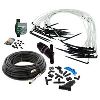
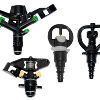
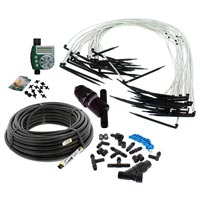
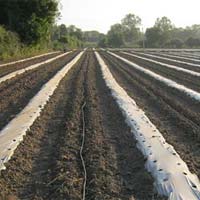
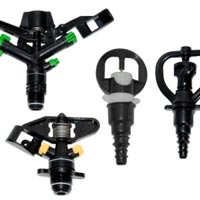

porous pipe
80 - 90 Per Meter
A porous pipe is a type of pipe designed to allow the controlled release or absorption of fluids through its walls. These pipes are permeable, featuring openings, holes, or a porous structure that enables the passage of liquids or gases. Porous pipes find applications in various fields, including agriculture, landscaping, drainage systems, and environmental engineering. Here are some key aspects of porous pipes: ### Features and Characteristics: 1. **Material Composition:** - Porous pipes are typically made from materials such as rubber, plastic, or other permeable materials. The choice of material depends on factors like flexibility, durability, and chemical resistance. 2. **Pore Size and Density:** - The design of porous pipes includes specific pore sizes and densities, influencing the rate at which fluids can pass through. This design consideration is crucial for controlling the flow of water or air. 3. **Permeability:** - Porous pipes are chosen for their permeable nature, allowing them to either distribute or absorb fluids. They are commonly used in applications where controlled water distribution, drainage, or aeration is required. 4. **Flexibility:** - Many porous pipes are designed to be flexible, enabling easy installation and adaptation to various layouts. This flexibility is particularly useful in applications like drip irrigation or subsurface watering. 5. **Length and Diameter:** - The dimensions of porous pipes, including length and diameter, can vary based on the specific application. Pipes may be available in rolls or pre-cut lengths, and the diameter may be selected based on the desired flow rate. 6. **Connectors and Fittings:** - Porous pipes may come with connectors or fittings, facilitating easy integration into irrigation or drainage systems. These connectors allow for the extension or branching of the porous pipe network. 7. **Applications:** - Porous pipes are used in a variety of applications, including: - **Agriculture:** For drip irrigation and controlled watering of crops. - **Landscaping:** In garden beds and landscapes to distribute water efficiently. - **Drainage Systems:** To facilitate controlled drainage and prevent waterlogging. - **Environmental Engineering:** In soil aeration projects, leachate collection in landfills, and other environmental applications. 8. **Subsurface Watering:** - Porous pipes are often employed for subsurface watering, delivering water directly to the root zones of plants. 9. **Erosion Control:** - Used in erosion control measures to manage water runoff and prevent soil erosion. 10. **Bubble Aeration Systems:** - Applied in bubble aeration systems for water treatment processes, introducing air into water for aeration. 11. **Wastewater Treatment:** - Porous pipes may be utilized in wastewater treatment systems for the controlled release or distribution of treated water. ### Considerations: - **Manufacturer Specifications:** - Porous pipes are available in various specifications, and it's essential to review the product documentation provided by the manufacturer for details on dimensions, flow rates, and compatibility. - **Installation Guidelines:** - Proper installation practices are crucial to ensure the effectiveness of porous pipes. Consideration of factors such as soil conditions, depth of installation, and layout is important. Porous pipes offer a versatile solution for applications where controlled fluid distribution, drainage, or aeration is required. When considering their use, it's advisable to consult with the manufacturer for specific product details and guidelines tailored to the intended application.

HDPE Pipe
Get Price Quote
Best Deals from Agricultural Irrigation Systems

HDPE Pipe
Get Price Quote
Pipes